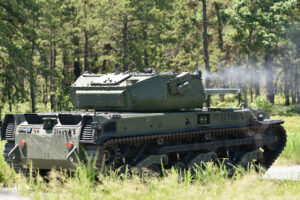
The Army held its first live fire test with its Robotic Combat Vehicle-Medium (RCV-M) prototype in late June, to include firing an XM813 30mm chain gun and an M240 machine from a Kongsberg wirelessly-operated remote weapon station. Officials this week detailed the test, which took place at Fort Dix in New Jersey, and was conducted to verify the RCV-M’s turret could be operated remotely from a separate control vehicle, in this case a Mission Enabling Technologies Demonstrator (MET-D) platform. “We…

 By
By 











